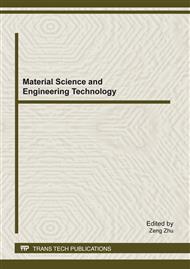p.434
p.445
p.452
p.456
p.464
p.468
p.474
p.480
p.487
The Design of the Piston-Cylinder High Temperature and High Pressure Control System
Abstract:
Piston cylinder high temperature and high pressure (HTHP) apparatus is a most important instrument for studying deep earth processes and other HTHP experiments. But the apparatus with basic configuration require improvement. A new temperature and pressure automatic control system is present in the paper, and the system operating software is developed based on LabVIEW. The new control system realizes the pressure and the temperature working in the multi-mode, which improves the applicability. Experiment data and operating state are real-time displayed and recorded. The software has encryption protection and alert functions. Actual operation results show that the system has the good performance of following the setting curves and robustness.
Info:
Periodical:
Pages:
464-467
Citation:
Online since:
February 2012
Authors:
Price:
Сopyright:
© 2012 Trans Tech Publications Ltd. All Rights Reserved
Share:
Citation:


